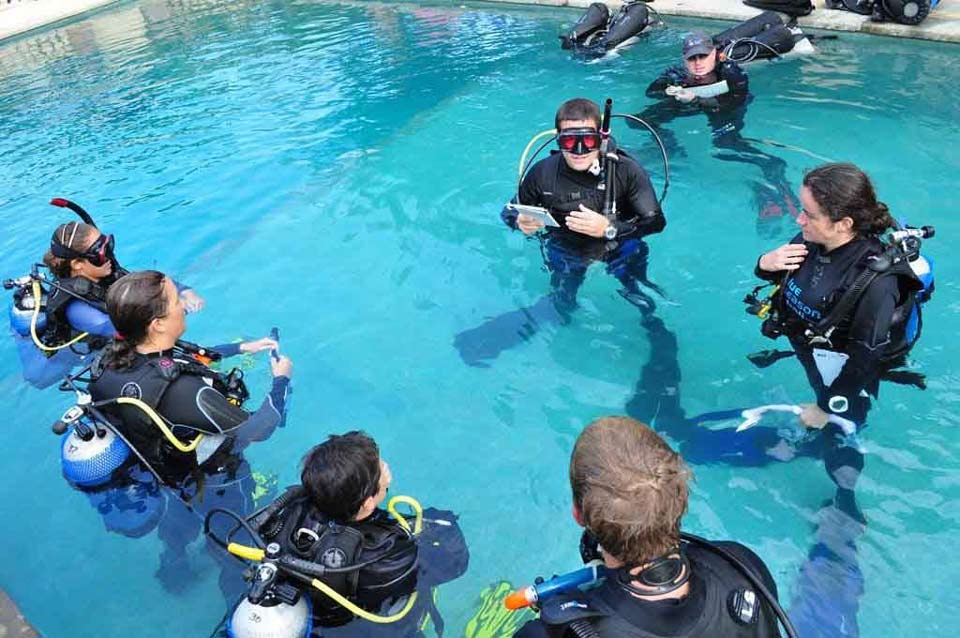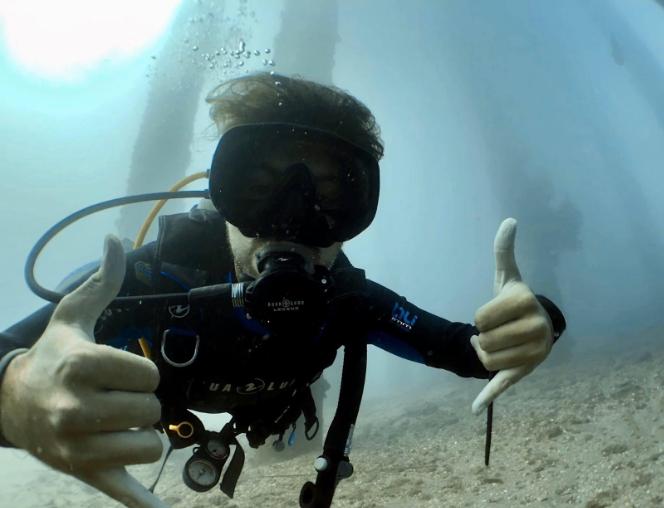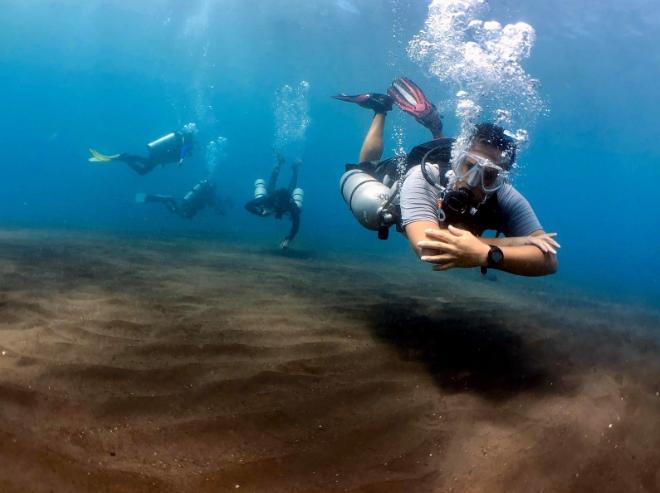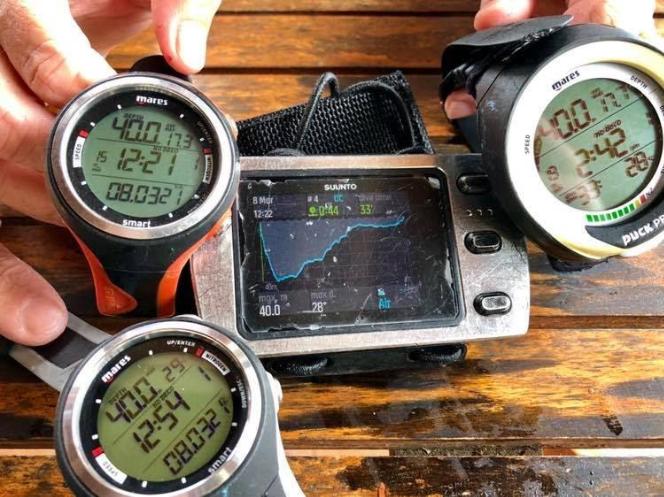Calculating SCR (Surface Consumption Rate)
If you want to check the progress on the air tank, you need to simply keep track of it. However, as you gain diving experience, you will become more relaxed in the water and you will therefore consume less air. We have covered about circulation and respiration for your PADI IDC theory program before, we also need to consider on how to track the air you consume in a dive. As you track how you consume air, it helps you to calculate your maximum dive time and plan the dives as well. When planning a dive, you need to base your maximum dive time on the basis on the consumption rate of air of the diver who tends to use air the fastest. This should also have a safety buffer to it.

Deep Air
It is important to note that volume and pressure are related inversely. As pressure increases, air volume decreases. When you take in a breath at 33 feet, you will actually consume more air than you would if you took that same breath on the surface. So, as you go deeper, you will consume your air faster.
SAC (Surface Air Consumption Rate)
In order to calculate the SAC, you need to do the following:
- Divide the total air consumed by the total time in minutes of the dive. This gives you the consumption per minute.
- Take the consumption per minute and multiply that by the total pressure of the average depth of your dive. This figure comes from 1 atmosphere of pressure as the surface pressure plus pressure at the average depth.
- Now divide the consumed air by absolute pressure at the average depth in order to find the consumption per minute and then adjust it for depth.
The equation looks as follows:
Dive air consumption/time of the dive/total pressure at the average depth of the dive = Surface Air Consumption Rate per minute
RMV (Respiratory Minute Volume)
SAC is calculated based on the volume of the tank. The two bars, which are 30 psi are based on the size of the tank. If your tank is big, then the 2 bars actually contain more air. As such, RMV is becoming the preferred calculation method for most divers. The difference between SAC and RMV is that the latter does not depend on tank size. In order to turn the SAC to RMV, add a tank conversion factor.
Imperial calculation – Tank volume (cubic feet) divided by its operating pressure. Now, multiply this number with your SAC.
Metric Calculation – In order to get this, take the volume of the tank in liters and multiply this by the SAC.
As you log more dives, SCR becomes a knowledge easily calculated and applied when doing dive planning. Learning to do it professionally as you apply them on the divers under your care or team is another skill that needs to be acquired. Contact Blue Season Bali today for more about diving professionally and our dive programs in Bali.
The related blogs:



